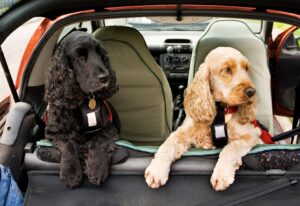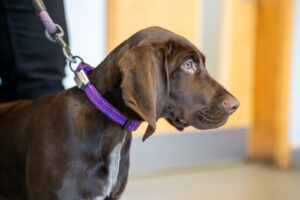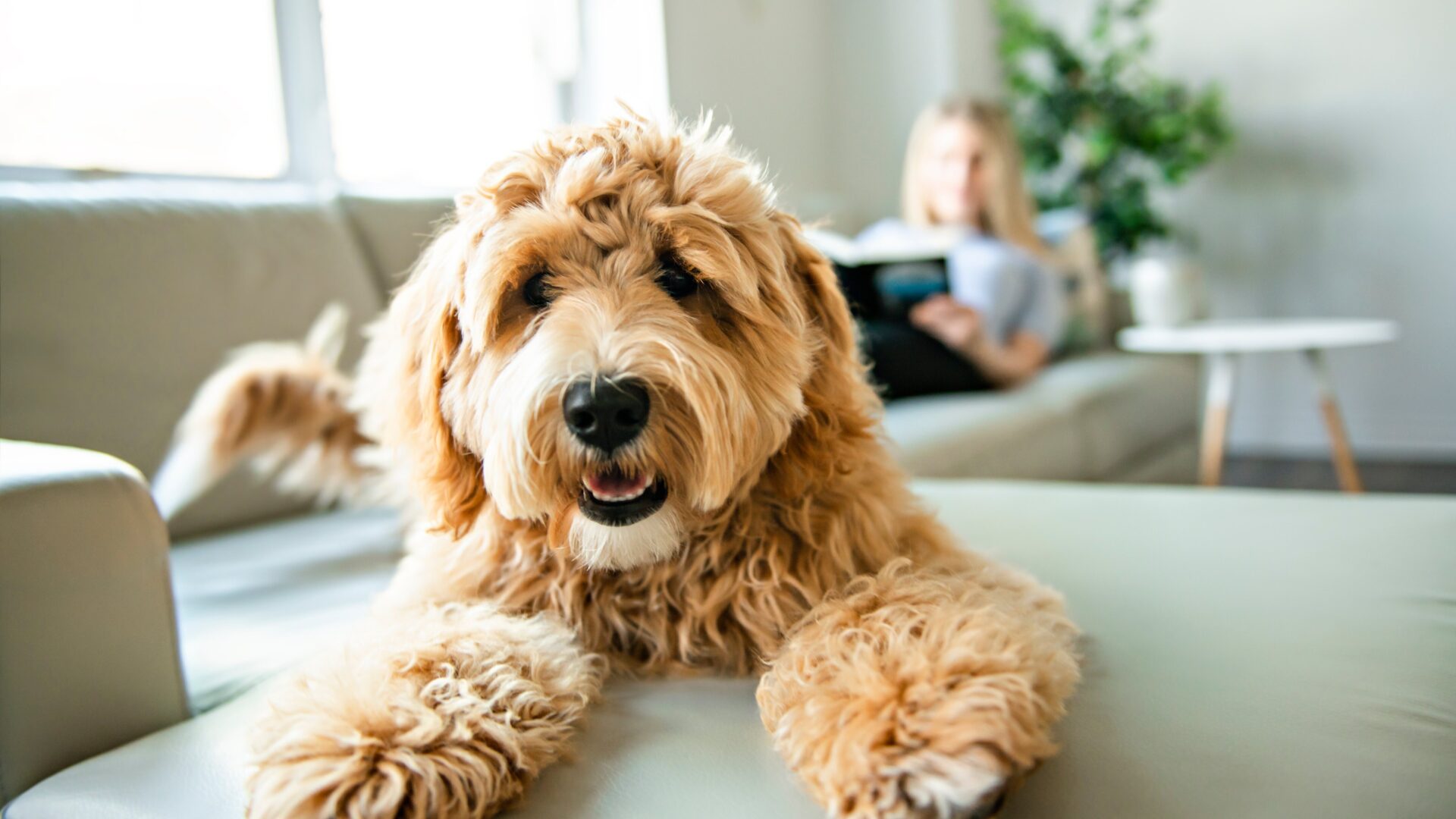Updated: 24/04/25
All dogs are individuals, and some are happier to visit the vets than others.
Similarly, some dogs love a ride in the car, while others can suffer from travel sickness even on short journeys.
It can also be incredibly distressing for both you and your dog if they manage to escape on the way to (or from) an appointment.

We have compiled a list of ten top tips to make journeys to the vets less stressful (for both you and your dog!):
- It can be helpful to get your dog used to spending time in the car ahead of events such as a vet appointment. Practice doing some short journeys with lots of encouragement and praise.
- It’s sensible to pack water for any car journey so that you can offer your dog a drink as needed and also pack some treats (these also come in handy as a reward after a check-up or booster vaccination!)
- If your dog is an anxious traveller, consider using a pheromone spray on a blanket or in their crate to help them relax. You can speak to your vet about this or alternative options for managing travel anxiety if your dog is really struggling.
- For car travel, make sure your dog is safe and secure. This can be done via use of a secured dog guard, crate, or car safe dog harness. A soft, thick bed can be used to improve comfort and help to brace against movement. Driving without your dog appropriately secured may be classed as ‘driving without due care and attention’, which is a finable offence; it may also invalidate your car insurance in the event of an accident.
- Be very mindful if travelling in hot weather, plan a trip where you don’t need to run errands on the way and never leave your dog unattended in the car in warm weather, as they can very easily overheat, even with the windows cracked.
- Once you have arrived at the practice, the safest option is to have your dog on a non-extendable lead with a collar or harness that fits correctly and can’t easily be slipped.

- When checking in for your dog’s appointment, the reception team will direct you to the best place to sit in the waiting room. Some waiting rooms will have cat-designated waiting areas, so please avoid these areas with your dog, and please also be mindful that some clients may be visiting with small furry pets who may find dogs scary.
- If your dog is very nervous or reactive to other dogs, then please let the reception team know. They will be able to advise on the best course of action (this may be waiting in the car with your dog or waiting in a separate side room).
- For dogs who get travel sickness, it is best to withhold food for two hours before you travel (unless there is a medical reason you cannot do this). If your dog really struggles with travel sickness, you can also talk to your vet about other options for managing this.
- Follow the same tips for safe travel on your return journey home. Try not to overwhelm your dog with attention once home, and give them time to relax and readjust after their vet visit.
Hopefully, these tips will prove useful in preparing your dog for safe travel to and from vet appointments.
If you have any specific concerns relating to travelling with your dog or managing stress or travel sickness, please reach out to your local vet practice for further support.

